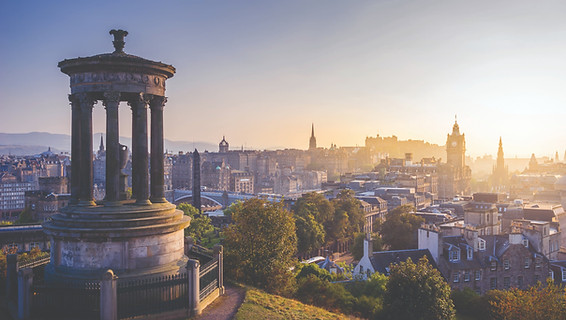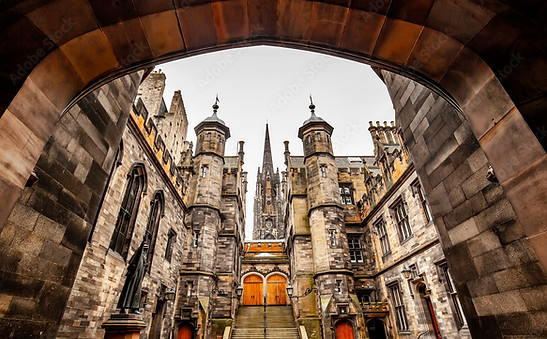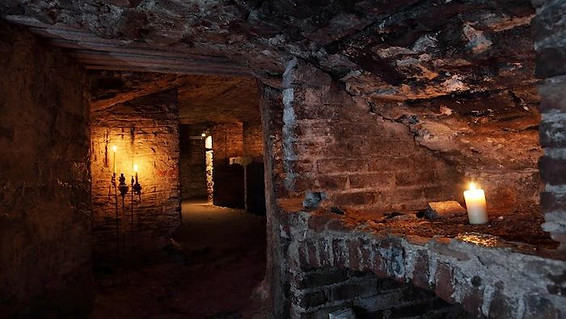top of page

Drumtochty Area ~ Aberdeenshire

With over 260 castles, manor houses, and ruins, Aberdeenshire is known as 'Scotland's Castle Country.' It has more castles per acre than anywhere else in the UK, and you can discover 19 of the most famous and dramatic castles right here.
Aberdeenshire also includes part of the Cairngorms National Park, the largest National Park in Scotland featuring one of the oldest forests on earth.
THINGS TO DO: ABERDEENSHIRE
Dunnottar Castle Ruins

Just 25 minutes drive from Drumtochty Castle you'll find the ruins of Dunnottar Castle, one of Scotland's oldest and most famous fortified castle ruins, in a dramatic clifftop setting. Tours available daily.
Cairngorms National Park

45 minutes drive from Drumtochty Castle is Cairngorms National Park. This is the largest National Park in Scotland and contains a portion of the oldest forest in the UK, The Caledonian Forest, which dates back to the last Ice Age.
The park itself has evidence of human settlement dating back over 8,000 years, and is home to a number of historic sites, including Bronze Age cairns, Pictish stones, and medieval castles such as Balmoral, where the recent Queen Elizabeth spent her final days.
Cairngorms National Park is a unique ecosystem that supports a wide range of plant and animal species including a herd of around 150 free-roaming reindeer.
Officially designated an international Dark Sky Park, it is the most northerly park of its kind in the world. Its minimal light pollution make excellent stargazing conditions.
Fettercairn Distillery

15 minutes drive from the Drumtochty Castle in the historic village of Fettercairn is the Fettercairn Distillery, famous for inventing the cooling ring in the scotch-making process. Established in 1829 by Sir Alexander Ramsay, the distillery originally only recruited illegal whiskey-makers to be its stillmen, recognizing that only they had the knowledge and skills needed to produce the best whiskey, and establishing Fettercairn's reputation for quality above all else.
In the mid-1950s, the whiskey-makers at Fettercairn fashioned a copper tube around the top of the still, to continually douse it with water - the cooling ring, an ingenious and practical solution which remains unique in Scotch whisky-making to this day. Tours & tastings available.
Cairn O'Mount Viewpoint

10 minutes drive from Drumtochty Castle is the Cairn O'Mount viewpoint. The two cairns at the Cairn O'Mount date back to roughly 4000 BC, during the Neolithic period, and are nationally listed monuments, thought to be funerary cairns. The road at Cairn O'Mount, has served as the gateway to the Highlands for several thousand years, as it was built upon an ancient & well-traveled footpath. It was used not only by Neolithic peoples, but also notable historic figures such as King Edward I and Macbeth in times of war.
Drumtochty Forest & Trails

Drumtochty Estate is home to the Drumtochty Forest, a fantastic 350-acre woodland glen with several trails ranging from easy to moderate. The Trailhead to the Drumtochty Forest is only a 2-minute walk from the West Lodge Cottage, a 4-minute walk from the Historic Stables lodging, and a 10min walk from the castle. We recommend the Short Forest Circular, about 4.5 miles with little elevation gain, but other trails can be had for more adventurous hikers.
Edinburgh

Old Town
Starting your stay a few days early? We recommend checking out the historic city of Edinburgh, which has been the capital of Scotland since the 15th century.
Edinburgh is divided into two parts, Old Town & New Town, which together make up a UNESCO World Heritage Site.
~ Old Town ~

Established in the 15th century, Old Town's streets and layout are preserved from its time during Middle Ages, and it is the oldest neighborhood in the Edinburgh. Its main street is known as the Royal Mile, connecting Edinburgh Castle to Palace of Holyrood, and the ruins of Holyrood Abbey.
Narrow closes (alleyways), often no more than a few feet wide, wind intricately to both north and south of the main spine which runs west to east.
THINGS TO DO: OLD TOWN
Edinburgh Castle

Built on a dormant volcano, Edinburgh Castle stands on Castle Rock, which has been occupied by humans since at least the Iron Age. There has been a royal castle on the rock since at least the reign of Malcolm III in the 11th century. Visitors can arrange historic tours, or simply wander, and check out the Honours (Crown Jewels) of Scotland, the famous 15th century gun Mons Meg, the One o' Clock Gun and the National War Museum of Scotland.
The Royal Mile

The Royal Mile runs east-west through the heart of Edinburgh’s Old Town, connecting the magnificent Edinburgh Castle, perched high on a base of volcanic rock, to the royal Palace of Holyroodhouse, which rests in the shadow of Arthur's Seat. Use the narrow closes (alleyways) to find your way through medieval streets and stop to discover pubs from the 16th century, as you tour sites such as: St. Giles Cathedral, the John Knox House, Gladstone's Land, among others.
Mary King's Close

Hidden beneath the Royal Mile lies Edinburgh’s deepest secret: a warren of hidden underground chambers where real people lived, worked and died. For centuries they have lain forgotten and abandoned beneath the city until the locals revitalized the incredible underground alleyways for tourism.
South Bridge Vaults

Deep under the South Bridge, 9 underground vaults, each as large as a small village, were established in the late 1700s to accommodate the overcrowding of Edinburgh's poorest district. But due to poor design, they quickly fell into disrepair and misuse, becoming the home of gamblers, criminals, and body snatchers. Eventually they were so dark, damp, and full of disease that they were abandoned altogether and lost for two hundred years, until they were rediscovered in 1985, and safely opened for excavation, research, and for history and ghost tours.
Palace of Holyrood House

The Palace of Holyroodhouse sits at the other end of the Royal Mile, and plays an important role as the current official residence of King Charles the 3rd when he visits Edinburgh. Visitors can explore a number of splendid state apartments as well as taking the opportunity to enjoy some magnificent artworks that depict royal lineage and historical moments. One of the most famous residents of Holyrood Palace was Mary Queen of Scots and the historical apartments provided the setting for some of the significant events of her reign.
Arthur's Seat

Arthur's seat is the highest point of an extinct 350 million year old volcano, and is located in Holyrood Park, at the end of the Royal Mile. Although the origin of the name is uncertain, some claim there is a connection between Edinburgh and King Arthur. Arthur's Seat may have been the location of the legendary Camelot.
Hikes can be had to this stunning lookout in various degrees of difficulty, from very easy to moderately strenuous. See website for hiking options.
~ New Town ~

In the late 18th century, Edinburgh was dramatically expanded in response to the overcrowding and unsanitary conditions of the Old Town. The 'New Town,' was a marvel of urban planning and neoclassical design, and still stands as the largest complete example of town planning from the Georgian period anywhere in the world, which is central to its World Heritage Status.
Its symmetrical streets, elegant squares, and graceful terraces epitomize the architectural ideals of the Enlightenment, and it became a beacon of 18th century learning, art, culture, and philosophy. Lovers of architecture, design, museums, (and shopping!) will find it worth a visit.
THINGS TO DO: NEW TOWN
Calton Hill

In the 18th century, Edinburgh was envisioned as the ‘Athens of the North’ and Calton Hill was considered Edinburgh’s version of the Athenian Acropolis, complete with classical revival architecture. The Hill is a volcanic ridge that boasts a collection of some of Edinburgh’s most important monuments and offers fantastic panoramic views of the city.
The nearby Calton Burial Ground is one of Scotland's oldest cemeteries, and it features the tomb of philosopher David Hume.
Princes Street Gardens

Home of the world's oldest floral clock, Princes Street gardens is made up of two parks covering 24 acres of land that separates Old Town from New Town. Bordered by historic attractions, the park itself boasts stunning views of the Old Town skyline which towers above the park's south side.
National Galleries of Scotland

The National Galleries of Scotland is a massive collection of 4 galleries in separately located buildings: The National, Modern One & Modern Two, and The Portrait. Pictured: The Portrait, which boasts images of Mary Queen of Scots, Robert Burns, and Charles Edward Stuart.
The Portrait gallery is decorated in elaborate murals and sculptural embellishments inside and out, including the Zodiac ceiling in the world-famous Great Hall.
bottom of page
